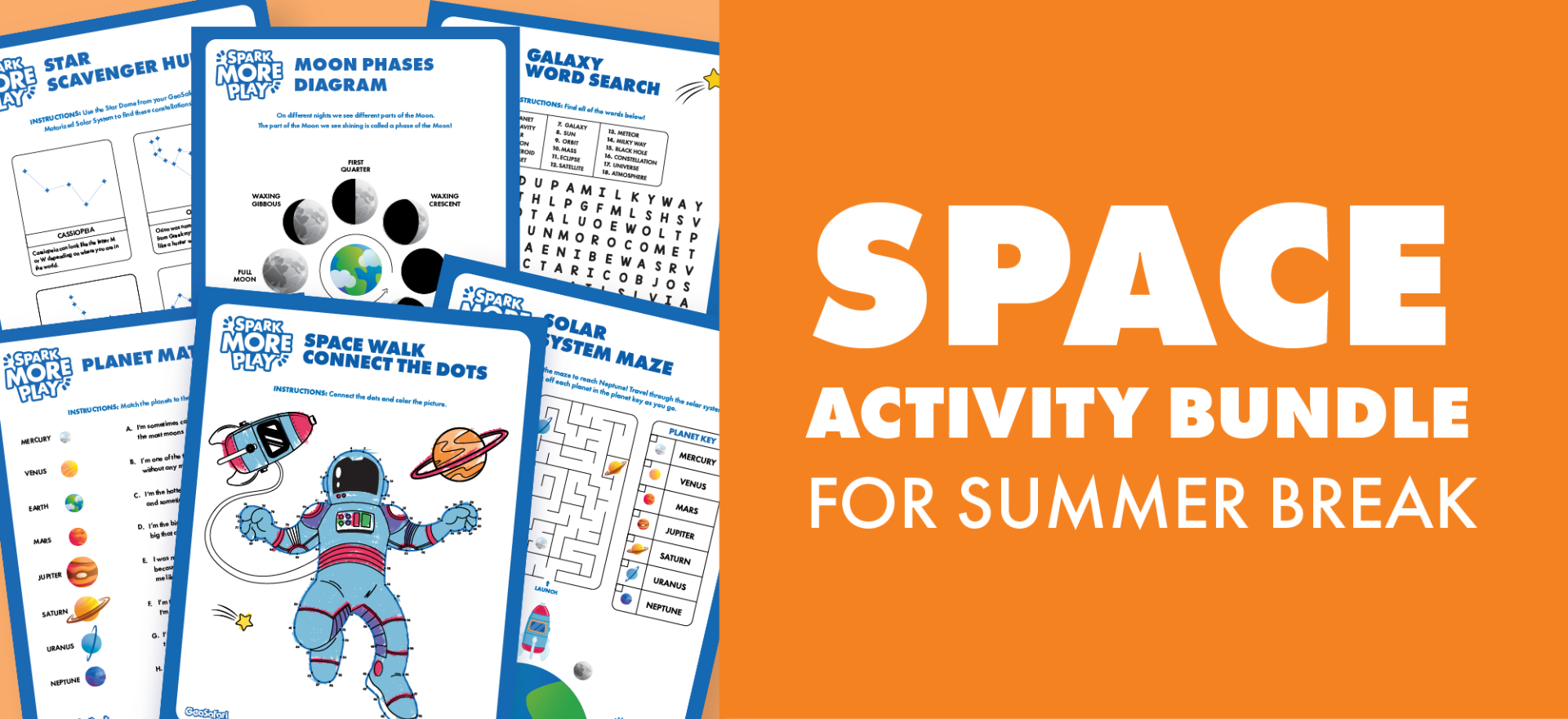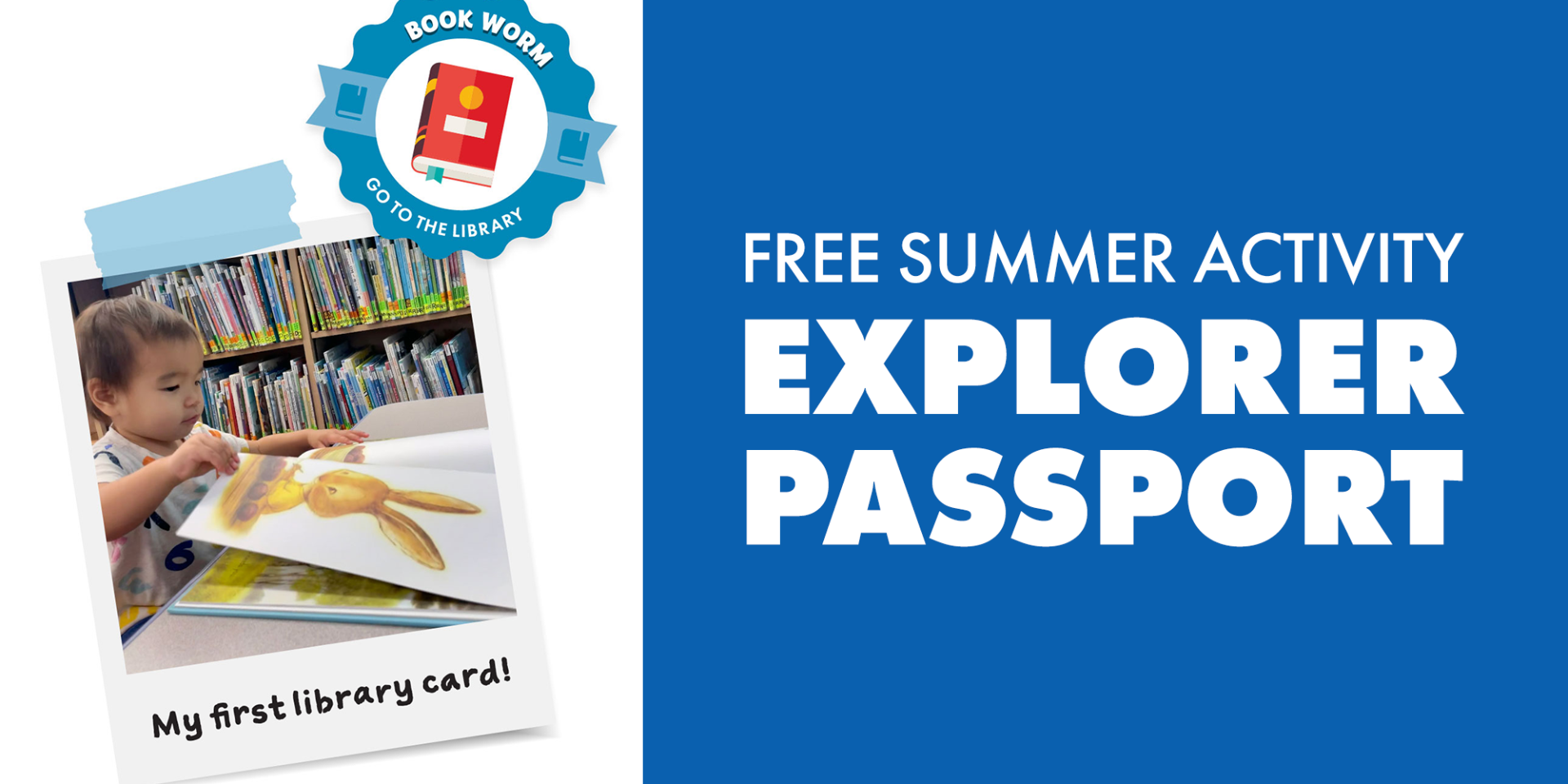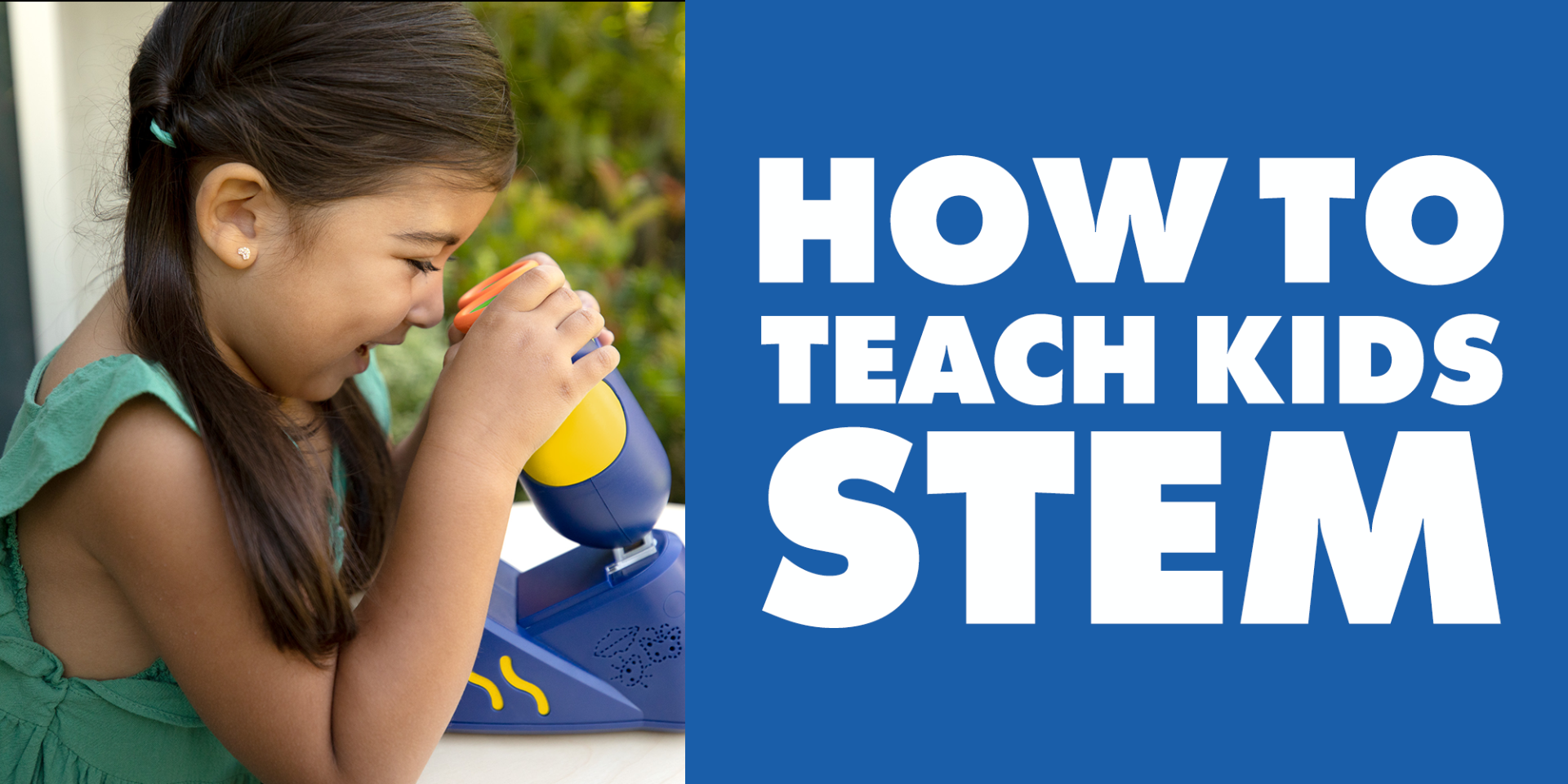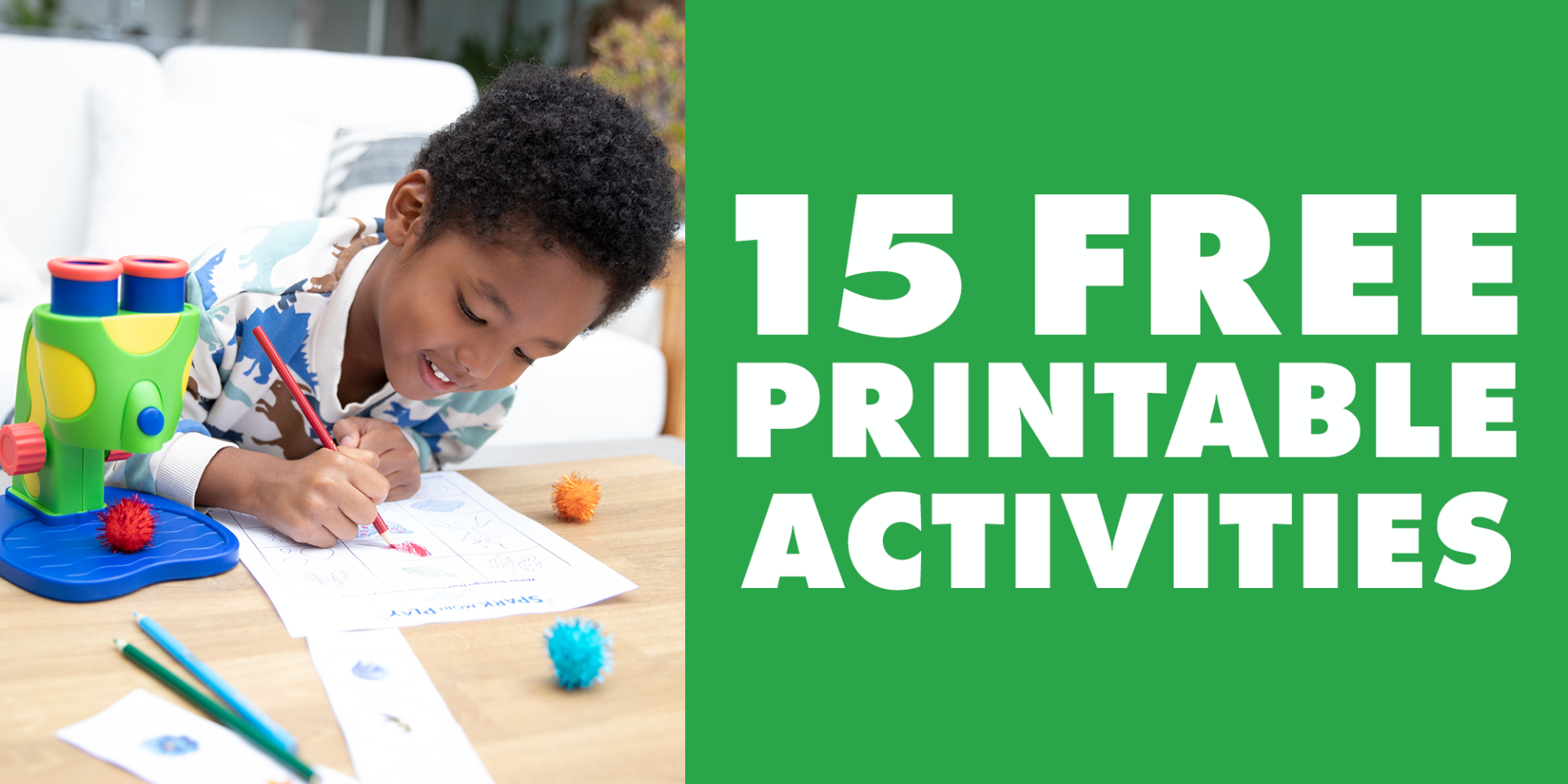
50 ways to play with playfoam
- EI Editor Posted On Dec 22, 2022
It’s no secret that we LOVE to play with Playfoam. Not only is it super squishy, squashy, mesmerizing, and sensory stimulating, it’s also a tactile learning compound that helps kids build school readiness skills! We put together some of our favorite ways to play with Playfoam so you can play at-home, in the classroom, on the go, and build those skills.
Playfoam® is specifically designed to help kids learn and grow while they squish, squash, and sculpt. Here are the top ten skills that Playfoam builds during playtime:
.jpg)
- Fine Motor Skills—Pinching, scooping, squeezing, pressing, and rolling Playfoam helps your kids build the fine motor skills and manual dexterity they need to button their shirts, hold a crayon, and eat with a fork.
- Hand Eye Coordination—Crafting generally requires the use of both hands, working in tandem, building bilateral and hand eye coordination.
- Shape, Color, and Texture Identification—Crafting provides hands-on experience with different shapes, colors, and textures—press your Playfoam into a square or make a rainbow with multiple colors! Older kids can squish the Playfoam into letters and numbers or even sculpt their names!
- Vocabulary—Talk to your kids while you craft together. What are they making? What colors are they using? How does the Playfoam feel in their fingers? All that chit chat introduces new words and provides exposure to the overall flow of language.
- Risk-Free Exploration—Experimenting with different shapes, colors, structures, and techniques during craft time is a great way to encourage your kids to try new things without risk of failure or judgement.
.jpg)
- Problem Solving—What shapes do you need to make a Playfoam snowman? Should they be the same size? Which shape goes on the bottom and which on the top? Figuring out what needs to happen to craft the creation kids envision helps builds strategic thinking skills.
- Creativity—Arts and crafts are a wonderful way to encourage creativity and imagination! With no instructions to follow, the sky’s the limit—kids can craft whatever they feel. Offer a variety of materials, allowing kids to choose what they like and assemble their way.
- Self-Expression—Crafting allows kids to express their feelings even when they don’t have the experience to identify them or the words to communicate them. Look closely at your kiddo’s creations, including their choice of colors, and ask them about what you’re seeing.
- Confidence and Self-Esteem—The feedback kids get when creating arts and crafts is a definite confidence booster! Compliment everything from the effort your child put into their masterpiece to their choice of colors and unique construction.
- Stress Reduction—Arts and crafts are proven to reduce feelings of stress and anxiety in both adults and children. Squeezing, pressing, pulling, and flattening sensory-soothing Playfoam—particularly when your kids are feeling overstimulated—can be especially relaxing.
40 At-Home Playfoam Activities

- Shape Animals—Use your imagination to shape your pet, a zoo animal, or even an imaginary animal! Try making a sea creature and watch it float in the bath.
- Make Stop Motion Animation—Pose your Playfoam, take a picture, repeat! Tell a story, make a movie, or creative a moving picture.
- Hide and Unbox Toys—Hide a small toy or figurine inside of a ball of Playfoam. Have a parent or sibling peel away the Playfoam and find the hidden treasure!
- Play Your Own Sculptapalooza/Playfoam Game—Write clues on cards that you will need to sculpt for a partner (example: apple, dog, butterfly). Take turns—one player sculpts and the other guesses what they’ve made.
- Play Hot Potato—Make a ball of Playfoam and take turns passing back and forth. Whoever has the hot potato when the music stops are out!

- Create Icebergs—Add a Playfoam iceberg to your water tray. Include aquatic animal figures for extra fun!
- Build a Snowman—ACreate a colorful Playfoam snowman, indoors!
- Create 3D Art—Draw a picture and color it in—or print a color picture—then shape matching-colored Playfoam over each section for a 3D masterpiece!
- Create a Creature—Sculpt a creature straight from your imagination! Use feathers, pipe cleaners, googly eyes, or popsicle sticks to accessorize.
- Doll Fashion-Create a fun, fashionable wardrobe for your dolls using Playfoam.

- Create a Seashore Sensory Bin—Squish seashells and animal figures into a large bin of Playfoam and see if your kiddo can find them all. Take the bin outside for some simulated-seashore fun in the sun!
- Squishy Squashy Name Game—Try to shape all the letters in your name. Now try a friend’s name!
- Make a Magical Sensory Substance—If you are making slime, add some Playfoam to the mix for a little added texture. Just remember—Playfoam never dries out, but slime will!
- Playfoam Color Smash—Squish together different colors of Playfoam make your own custom color blend.
- Glow Statues—Use glow in the dark Playfoam to create your own glow in the dark statue. Turn the lights out and let it glow!

- Fun Food—Make a Playfoam cake, hamburger, or fruit basket.
- Playfoam Photo Frame—Use popsicle sticks to create a photo frame and cover it in Playfoam to decorate it. Don't forget to add a big squish of Playfoam for a base!
- Playfoam Checkers—Play checkers with your very own handmade pieces! Use a different color Playfoam for each player. When it’s time to make a “king,” squish two Playfoam checkers together.
- Playfoam Baseball—Batter up! Play indoor baseball using an old paper towel tube as a bat and a Playfoam baseball. Use pillows or other items from around the house for the bases. Set up a boundary in the outfield so you can “hit one over the fence.”
- DIY Stress Ball-Stretch open a balloon (or use a piece of fabric) and fill it with Playfoam. Tie off the balloon (or fabric piece), then squish and squash the Playfoam inside. Or use a surgical glove to make a squishy high five!

- Playfoam Frisbee Golf—Make a Playfoam flying disc and set up targets around the house to hit with your disc! You can experiment with different locations around the house as well as “par” difficulties. Whoever can hit the target in the least number of attempts is the winner.
- Playfoam Flower Garden—UUse different colors of Playfoam to create a beautiful flower garden. Don’t forget to make different flower shapes!
- Egg and Spoon Race—Make a Playfoam egg, rest it in a spoon, and challenge a partner to race across the room without dropping the “egg”! You can even try holding the spoon in your mouth or with your opposite hand for an “egg-stra” challenge.
- Playfoam Indoor Snowball Fight—Make colorful Playfoam snowballs that will never melt or make a mess!
- Playfoam Indoor Dodgeball-Dodgeball is soft and safe—even inside!—when you’re playing with a Playfoam ball!

- Playfoam Soccer—Make your own soccer ball and balance it on your foot—now try scoring a goal! You can use a box or a laundry basket as a goal.
- Playfoam Balance—Balance a ball of Playfoam on your head and walk around the room without dropping it. Now try balancing it on your shoulder.
- Playfoam Basketball—Make a Playfoam basketball and try shooting it into a wastebasket as your hoop! Set the wastebasket up against the wall for the backboard or set it up super high for tougher challenge.
- Playfoam Catapult—Make your own catapult by experimenting with spoons, spatulas and “found objects” to launch your Playfoam across the room.
- Trick Shot Playfoam—Make a cool “trick shot” with Playfoam. Bounce it, bank it, ricochet it! Challenge an opponent to see who can make the best shot. Take a video of your best shot and upload to YouTube to show the world your Playfoam trick shot skills.
.jpg)
- Color Matching—Playfoam is the perfect way for kids to practice their colors! Choose a few items from around the house and place them on a table. Ask your kiddo to make balls of Playfoam that match the color of each object, then show them to you.
- Turtley Awesome Gifts—Your kids can create personalized mini turtle-grams using Playfoam pods and a little creativity. What a sweet special delivery for friends and family! All you need is green construction paper, scissors, marker, tape, Playfoam pod, and google eyes! !
- Shapes—Challenge your children to squish their Playfoam into a few simple shapes—a circle, square, and triangle—then check back and see how they did. Or grab some cookie cutters and kitchen utensils to help inspire all kinds of colorful creations!
- Patterns—Print out some simple images in a few different colors or draw your own, like this colorful caterpillar. Challenge your kiddo to create matching balls of Playfoam and place them in the same order.
- Letters and Numbers-Write a set of letters or numbers for your child to copy, then show them how to roll their Playfoam and sculpt it to match. Or use the pre-printed cards and corresponding images in the Playfoam Shape & Learn Alphabet Set and Playfoam Shape & Learn Numbers Set to practice letter formation and alphabet mastery.
.jpg)
- Quantities and Counting—Use sticky notes to label each cup of a muffin tin with a numeral, 1-10. Then see if your child can roll and place the quantity of Playfoam balls that corresponds with the numeral on each cup.
- Simple Addition and Subtraction—Use the labeled muffin tin to introduce simple addition and subtraction by moving the balls of Playfoam from the cups labeled “1” and “2” into the empty “3” cup, counting along the way.
- Solar System—Launch your child’s imagination into outer space! Provide a scaled, color printout of the planets and leave your little one to recreate each planet out of Playfoam.
- Words—Playfoam is perfect for practicing simple C-V-C words! Kiddos can use Playfoam to construct the letters in their names or the words “mom” and “dad”. Or have them squish out the words “cat” and “dog” and create Playfoam sculptures to match.
- Coloring & Creative Design—Use coloring pages or a homemade drawing, and allow your kiddo to create their very own work of art. May their creative minds run wild! For more details, click here.
Classroom Activities
Playfoam® is the perfect addition to any preschool, Kindergarten, or elementary classroom. This squishy sensation is totally non-toxic and comes in an array of cool colors that never dries out—no special storage needed—so your students can use it again and again and you can save your budget for other things! The teachers-turned-product-developers at Educational Insights share five of their favorite ways to use Playfoam in the classroom below:
.jpg)
- Letter/Number Practice—Playfoam is the perfect, reusable material for practicing shapes, letters, and numbers. Great for the whole class or as a center activity, challenge your students to sculpt specific shapes out of Playfoam or roll the Playfoam into a tube and bend to form specific letters and numbers. Students can even use Playfoam to spell simple C-V-C words or their names. For many students, tactile, hands-on learning enhances the learning process, making your lessons even more effective (and way more fun). When you’re done for the day, collect the Playfoam in a bowl or bin and set it aside for next time.
- Creativity/Art Time—Whether you’re providing an array of materials for open-ended art experiences or teaching a specific lesson, Playfoam is perfect for classroom crafts. Include Playfoam alongside the crayons, paints, craft sticks, and pipe cleaners at your free time art station. Or provide a variety of Playfoam colors in lieu of crayons, paints, or clay and guide your students to create tropical fish to support a lesson on habitats or self-portraits for social-emotional learning lessons.
.jpg)
- Focus Tool—For many students, particularly those with ADHD, small movements can burn off the excess energy that prevents them from being fully present during your lessons. Fidget tools can help—and so can Playfoam! Place a pod at each student’s desk and let them squish and squash while they listen and learn. You’ll be amazed at their increased ability to focus and concentrate.
- Calming Corner—Little kids have big feelings and sometimes they need a bit of space to sort them out. In addition to a comfy place to sit and cozy comforts like throw pillows and stuffed animals, you might include books on managing feelings, noise-cancelling headphones, and a few fidget toys to help kids calm and recenter themselves. Playfoam is perfect for your calming corner, providing relief from stress and anxiety through tactile stimulation. A sealed calming tube filled with slow-moving, totally mesmerizing Playfoam Pluffle™ is another great addition.
- Rainy Day Fun—Kids hanging out in your classroom because of a rainy recess or lunch? Offer Playfoam as an at-desk activity and see which students can sculpt a raindrop, puffy cloud, rainbow, or duckling. Then sing a round of “Rain, Rain Go Away” and shift your sculpting to suns, birds, and beach umbrellas.
Sensory Bins for Home and the Classroom
Sensory bins promote exploration and discovery through totally engaging tactile play. Also known as the feel-good fluffy stuff, calming and soothing Playfoam Pluffle™ is a great multisensory material for your classroom sensory bins! Little kids love to dig, smash, sift and scoop the Pluffle, building those fine motor skills, and older kids can use Pluffle-filled bins to work on sorting, matching, and color, letter, and number identification activities as Pluffle is perfect for hiding magnetic letters and numbers or colored counters! Here are 6 ways to make sensational sensory bins for your home or the classroom:
.jpg)
- Playfoam Pluffle Patterns—Fill two mixing bowls with two different colors of Playfoam Pluffle. Using a spoon and a muffin tin, show your little one how to spoon the first color of Playfoam Pluffle out of one bowl and into the first muffin hole, then swap to the other bowl and hole, repeating to form an A/B color pattern.
- Playfoam Pluffle Fishing—Hide small objects, such as the acorns from The Sneaky, Snacky Squirrel Game!®, the bones from Shelby's Snack Shack Game® or colorful buttons in a bin full of Playfoam Pluffle, then use the squeezers, a pair of child-safe tweezers or a scoop to pull them out. The Helping Hands Fine Motor Tool Set™, is a fantastic set for little hands. Practice sorting the objects by color or size to squeeze in some early math skills.
- Playfoam Pluffle-bet—Hide plastic or magnetic letters or numbers in a large plastic bin full of Playfoam Pluffle. Little ones can use their hands or a magnet to dig out a letter and show it to you—you can say its name and the sound it makes. Help older kiddos find the letters in their names, think of words that start with that letter, or set the letters out on the floor in alphabetical order as they find them.
.jpg)
- Playfoam Pluffle Tubes—Remove about ¼ of the Playfoam Pluffle from its tube, then add plastic toys like insects or fish, buttons, bells, etc. We added acorns from Sneaky, Snacky Squirrel Game . Shake the tube to mix them in, then have your little one roll and twist the tube to find as many hidden objects as they can. Talk about what they’ve found using descriptive vocabulary and try counting them as the objects are discovered. Great for on-the-go fun!
- Playfoam Pluffle Funds—Bury some cash (use plastic coins and paper money if you’d prefer, like those from our Play Money Coins and Bills set) in a bin of Playfoam Pluffle. Then, let your kids use their fingers, child-safe tweezers, or our preschool game squeezers to make it a little trickier, to extract the money. Younger kids can count the number of coins they have; older kids can add up their value. Play against a sibling or friend to see who has more and who has less.
- Playfoam Pluffle Excavation—Hide different types of rocks, minerals, and fossils, like those found in our Complete Rock and Mineral Set, in a bin of Playfoam Pluffle. Use plastic tongs or tweezers to excavate each item from the Pluffle and a paintbrush or basting brush to clean them off. Can your kids identify the specimen? As a bonus, they may want to inspect their findings under a microscope.
Now that you’re brimming with Playfoam creativity, start playing! Roll, squish, squash, cut, smash, sculpt, and more to develop those school-readiness skills and spark more creativity. Plus, check out some bonus activity sheets below for more Playfoam fun:
[ Click here to download connect the name coloring page in PDF format ]
 Shop UK Site
Shop UK Site 





